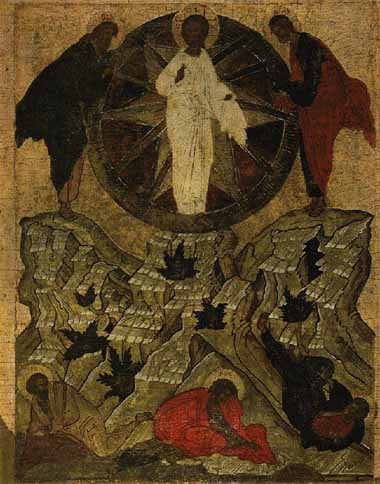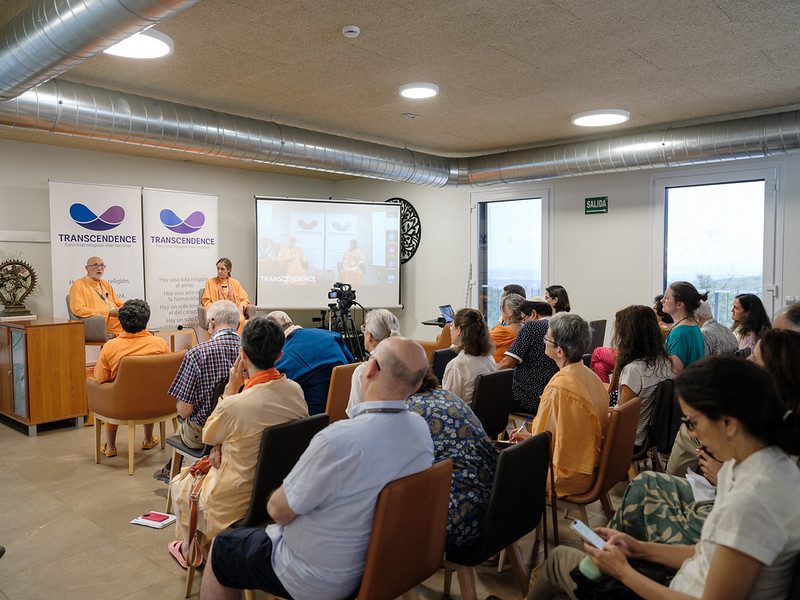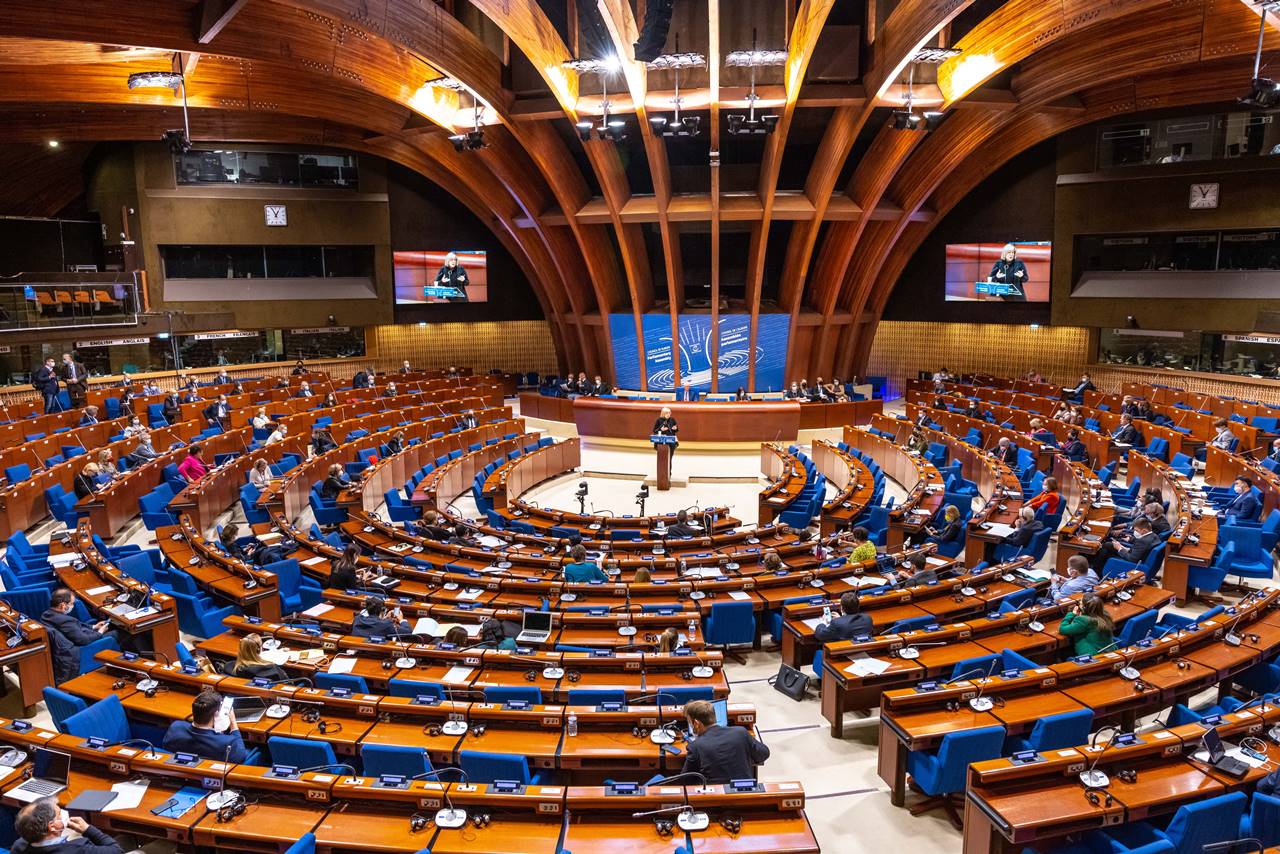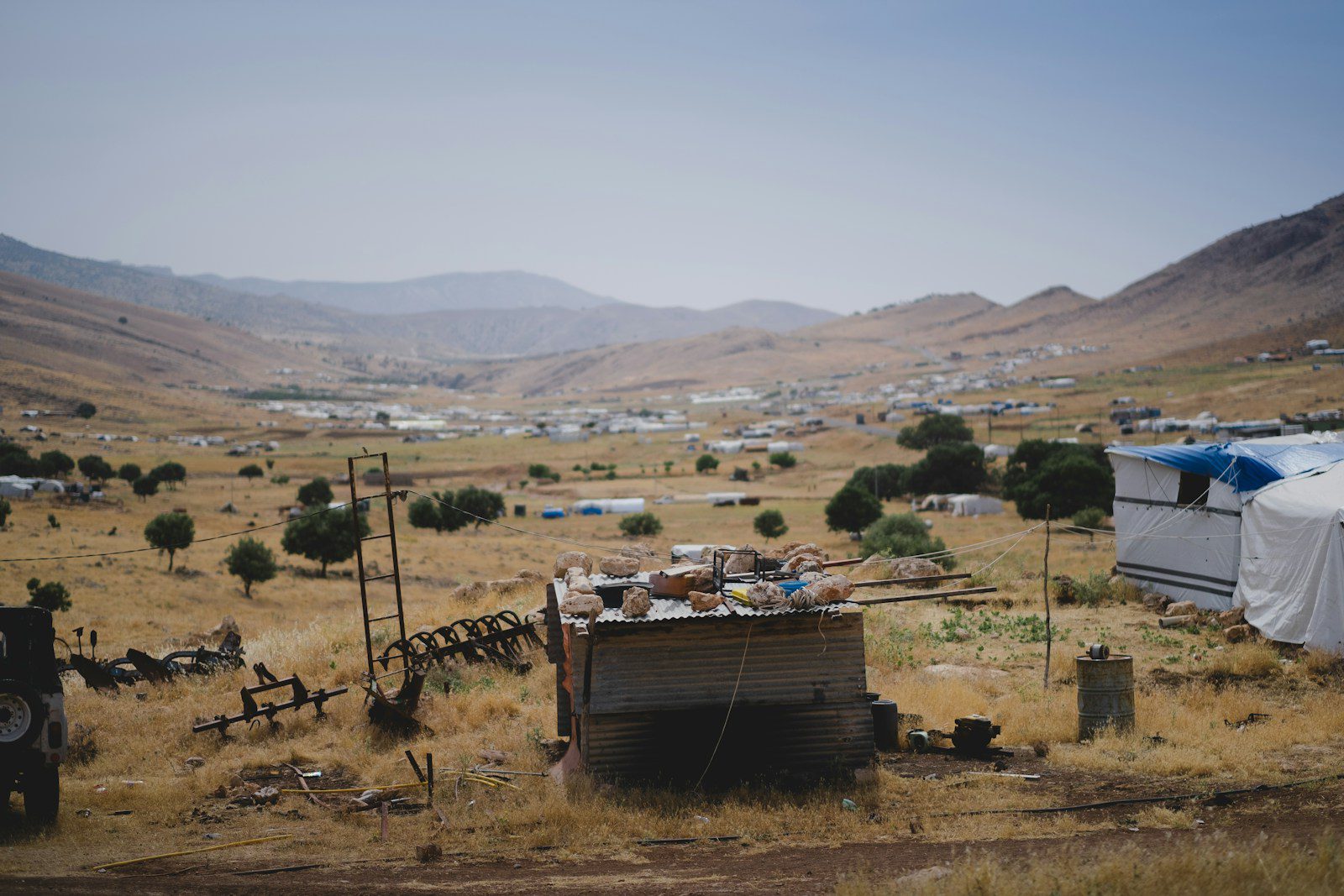By Prince Evgeny Nikolaevich Trubetskoy
On the occasion of the book by candle. P. A. Florensky “Pillar and Support of Truth” (Moscow: “Put”, 1914)
1
In the Gospel there is a wonderful image, personifying the unceasing division in the earthly life of mankind. On Mount Tabor, the chosen apostles contemplate the bright face of the transfigured Christ. Down below, at the foot of the mountain, in the midst of the general vanity of the “unfaithful and depraved” kind,[1] a madman gnashes his teeth and foam comes from his mouth,[2] and the disciples of Christ, because of their unbelief,[3] are powerless to heal.
This double image – of our hope and our grief, beautifully combines into a complete picture, which several centuries ago Raphael tried to convey in full. There, on the mountain, that radiance of eternal glory appeared to the elect which must fill both the human soul and external nature. This glory cannot remain forever in the hereafter. In the same way all human souls and persons should shine as the sun in Christ; in the same way the whole corporeal world must become the bright shirt of the transfigured Saviour! Let the eternal light descend from the mountain and fill the plain with it. In this, and in this alone, lies the final path to the actual and complete healing of the demon-possessed life. In Raphael, this thought is expressed through the raised finger of the apostle, who, in response to the request for healing of the madman, points to Tabor.[4]
The same contrast that is embodied in this painting is also a major motif in Russian religious art. On the one hand – the great Athonian ascetics, and after them also the ascetics in the Russian Church, have never stopped proclaiming that the Light of Tabor is not a fleeting phenomenon, but a permanent, eternal reality, which even here, on earth, becomes clear to the greatest by the saints, crowning their ascetic feat. On the other hand, the more the saints and ascetics climbed the mountain, the more they abandoned the world in their search for the Light of Tabor, the stronger down below, on the plain, the dominion of evil was felt, the more often there gave out the cry of despair.
“Lord, have mercy on my son; at the new moon he is seized with rage, and he suffers badly, for he often falls into fire and often into water” (Mat. 17:15).
All over the world there is this irreconcilable opposition of the upper and the lower, of the mountainous and the plain. However, probably nowhere else does it manifest itself so clearly and so sharply as here. And if there is a soul that is torn, divided and tormented by contradictions, then this is by far the Russian soul.
The contrast between transformed and untransformed reality is everywhere in one way or another. However, in countries where European civilization prevails, it is obscured by culture and therefore not so noticeable to the superficial observer. There the devil walks “with a sword and a hat”, like Mephistopheles, while here, on the contrary, he openly shows his tail and hooves. In all these countries, where even a relative order and some kind of prosperity reigns, Beelzebub is in one way or another chained. In our country, on the contrary, he was destined for centuries to rage at will. And probably it is precisely this circumstance that causes those unusual upsurges of religious feeling which the best disciples of Christ in Russia experienced and are experiencing. The more boundless is the chaos and ugliness of turbulent flat existence, the stronger is the need to ascend into the realm of the high, into the immovable repose of unchanging, eternal beauty. Until now, Russia has been the classic country of life’s misfortune – isn’t that the reason why it is precisely that region where in the religious inspiration of the elect the ideal of universal transformation has shone especially brightly!
I speak not only of the high apostles who were given to see the Light of Tabor face to face – Russia did not lack those lesser disciples of Christ who did not see the Transfiguration with their bodily eyes, but who foretold it in the contemplation of the mind and of faith, and have awakened that faith in others, heralding in the plain the healing that comes from above. Following the ascetics, great Russian writers also sought the Tavor Light. The apostle, who, when asking for healing, points his finger to the mountain and to the Transfiguration, thereby expresses the deepest thought of Russian literature – both artistic and philosophical. Pure, abstract reasoning, as well as “art for art’s sake” alienated from life, have never been popular with us. Quite the opposite: from both thought and artistic creation, Russian educated people have always expected a transformation of life. In this respect, such antipodes as Pisarev – with his utilitarian view of art, and Dostoevsky – with his slogan “beauty will save the world” are similar in our country. Our creativity, the spiritual, and the philosophical, has always longed, not for some abstracted truth, but for actual truth. The greatest that is in our literature was created in the name of the ideal of the whole life. Consciously or unconsciously, the greatest representatives of Russian folk genius have always sought that light that heals from within and transforms life from within: both spiritual and physical. Universal healing in universal transformation: we find this thought under various modifications in our great artists – in Gogol, in Dostoevsky, and even, be it in a distorted, rationalized form, in Tolstoy, and among the thinkers – the Slavophiles, Fedotov, Solovyov and the many continuations of the latter.
And always the search for the Light of Tabor is evoked in our writers by life, a painful feeling of the power of evil that reigns in the world. Whether we take Gogol, or Dostoyevsky, or Solovyov, in each of them we will see the same source of religious inspiration: the contemplation of suffering, sinful and demon-possessed humanity – this is what evokes the greatest upheavals in their work. Before them stands not just one sick person, but the great nation as a whole – like the never-suffering native country, periodically possessed by a mute and deaf spirit, which constantly calls for help and constantly seeks help. This sense of hell reigning in our earthly reality has incited the exponents of our religious idea to various deeds and exploits. Some have completely fled from the world and climbed the mountain – to those highest peaks of spiritual life, where the Tabor Light really becomes tangible, visible; others, remaining at the foot of the mountain, mentally foretold this vision and prepared human souls for it. In any case, however, the object of religious search, the main source of religious creativity, was the same for ascetics, artists, and philosophers.
2
This source has not dried up even nowadays. A vivid proof of what has been said is the recently published remarkable book by Fr. Pavel Florensky Pillar and support of truth. In our country, he is not the progenitor of some new direction, but a continuation of the Christian tradition, which in the life of our church counts many centuries, and in Russian literature – both in art and in philosophy, it has already found not one or two talented and even genius exponents. However, the said book of his is a sequel that is deeply original and creative; in her person we have a work of extraordinary talent, which is a genuine phenomenon in modern Russian religious-philosophical literature.
The movement of his thought is determined by this fundamental contrast, which has determined the entire course of the development of Russian religious thought: on the one hand, it is the abyss of evil, the sinful, internally disintegrated world, the world that has “disintegrated into contradictions si”, and on the other hand – the “Tavor light”, in the eternal reality of which the author is deeply convinced. All this is still the same ideal of the perfect, complete life, which before Fr. Florensky was repeatedly embodied in the works of Russian religious thinkers. Sophia – Wisdom of God – type of all creation; The Immaculate Virgin Mary – the manifest embodiment of this wholeness, manifestation of the deified creature on earth; finally – the Church, as a manifestation of this same totality in the collective social life of humanity – all ideas that Russian religious thought has long absorbed, which have entered into circulation in our country and are therefore well known to the educated Russian reader interested in religious matters. Father himself. Florensky wants to be the exponent not of his personal but of the objective, ecclesiastical wisdom, and therefore it is understandable that he does not claim novelty of the basic principles.
In his words, his book “is based on the ideas of St. Athanasius the Great” (p. 349) and is completely alien to the desire to set forth any “system of his own” (p. 360). Of course this desire to renounce one’s own system for the higher divine system of Revelation is quite understandable on the part of a religious writer. Nevertheless, Fr. Florensky vainly thinks that all these “own views” such as he has in his work originate only from “his own misconceptions, ignorance or misunderstanding” (p. 360). This book certainly cannot claim the absolute value of Revelation, but only the relative value of human interpretation of Revelation. And here, in this subordinate area of human creativity, something no less valuable is said, of course, precisely because it is its own.
In this sense, this precious thing that Fr. Florensky, is concluded above all in the unusually bright and strong depiction of the main opposition, from which the search for our religious thought was determined and is determined. On the one hand, a clear and deep awareness of the eternal reality of the Tabor Light, which is the supreme beginning of the universal spiritual and physical enlightenment of man and all creatures, and on the other hand, the overwhelmingly powerful sanctification of the chaotic sinful reality, of this furious life, which touches Gehenna. I do not know in recent religious-philosophical literature an equal in depth analysis of this inner splitting and disintegration of the personality, which is the very essence of sin. In the literature of the past centuries, this theme was developed with incomparable brightness in Confessions of bl. Augustine and in this regard Fr. Florensky can be called his student. His main source, however, is not any literary examples, but his own painful experiences, verified through the collective, ecclesiastical experience.
The book Pillar and Support of Truth is the work of a man for whom Gehenna is not an abstract concept, but a reality that he has experienced and felt with his whole being. “The question of the second death,” he says, “is a painful, sincere question. Once in my dream I experienced it in all its concreteness. There were no images, only purely internal experiences. A bottomless, almost substance-dense darkness surrounded me. Some forces drew me towards the end, and I felt that this was the end of God’s being, that outside of it was absolute Nothingness. I wanted to scream but I couldn’t. I knew that just one more moment and I would be thrown into the outer darkness. Darkness began to permeate my entire being. My self-consciousness was half lost, and I knew that this was absolute, metaphysical annihilation. In utter desperation, I screamed not with my voice: “From the depths I cried to You, Lord. Lord, hear my voice.” In those words at that moment my soul poured out. Someone’s hands powerfully grabbed me – me, the sinking one, and threw me somewhere far from the abyss. The thrust was sudden and powerful. Suddenly I found myself in a familiar setting, in my room, as if from some mystical non-existence I fell into my usual existence. And immediately I felt myself before the face of God, and then I woke up, all wet with a cold sweat” (p. 205-206).
That sin is “a moment of disorder, decay and corruption in the spiritual life”, this was said with incomparable eloquence, although expressed differently, by St. Ap. Paul (Rom. 7:15-25). Here the merit of our author lies only in the remarkably vivid revelation of the vital meaning of the formula in question, in the subtle psychological depiction of the sinful condition. In sin, “the soul loses consciousness of its creative nature, loses itself in the chaotic vortex of its own states, ceasing to be their substance: the Self suffocates in the “thought flow of passions… In sin, the soul slips away on its own, loses myself. It is not by chance that the language characterizes the last degree of the moral fall of women as “loss”. No doubt, however, there are not only “lost” women, who have lost themselves within themselves, their god-like creation of life, but also “lost men”; in general, the sinful soul is a “lost soul”, moreover, it is lost not only to others, but primarily to itself, since it failed to preserve itself” (p. 172). The sinful state represents, first of all, “a state of depravity, depravity, i.e. destruction of the soul – the integrity of the person is destroyed, the inner layers of life are destroyed (which should be hidden even for the Self itself – such is preferentially the sex), are turned outward, and what is to be discovered, the openness of the soul, i.e. sincerity, immediacy, motives for actions, precisely this is hidden inward, making the personality secret… Here it receives a face, and even as it were a personality, that side of our being which is naturally faceless and impersonal, for this is the ancestral life, whatever happens in the face. Having received the phantom likeness of a person, this generic sub-basis of the person acquires independence, while the actual person is falling apart. The ancestral domain is separated from the personality, and therefore, having only the appearance of a personality, it ceases to obey the dictates of the spirit – it becomes unreasonable and insane, and the personality itself, having lost from its composition its ancestral basis, i.e. its root, loses consciousness of reality and becomes the image no longer of the real basis of life, but of emptiness and nothingness, i.e. of the empty and gaping mask, and, concealing with itself nothing that is real, itself realizes as a lie, as acting. Blind lust and aimless mendacity: this is what remains of the personality after its depravity. In this sense, depravity is a duality” (pp. 181-182). It represents “the pre-Genetic decay of the personality.”
Doubt of the Truth and, ultimately, its loss, is only a variety of the general sinful condition, a particular manifestation of that inner decay of the personality which is the very essence of sin. The fascinating description of this mental foretaste of Gehenna in Fr. Florenski again unwittingly makes us remember this same example, which obviously stood before the author: Confessions of bl. Augustine.
“There is no truth in me, but the idea of it burns me.” However, the doubt carried to the end makes us doubt the very idea and the fact that we are looking for it. “It is also untrustworthy that I expect the Truth. Maybe it just seems to me too. And besides, perhaps, costing itself is not costing? Asking myself the last question, I enter the last circle of the skeptic’s hell, the compartment where the very meaning of words is lost. There they cease to be fixed and fall from their nests. Everything becomes everything, every phrase is perfectly equivalent to every other; any word can change its place with any other. Here the mind loses itself, is lost in the formless and disordered abyss. There is feverish delirium and disorder here.’
“However, this extreme skeptical doubt is possible only as an unstable equilibrium, as a limit of absolute madness, because what else is madness if not mindlessness, if not an experience of non-substantiality, non-support of the mind. When it is experienced, it is carefully hidden from others; once experienced, it is remembered with extreme reluctance. From the outside it is almost impossible to understand what it is. From this extreme border of orb reason drifts the chaos of delusions and an all-piercing chill deadens the mind. Here, behind the thin partition, is the beginning of spiritual death” (p. 38-39).
The end of these earthly foretastes of spiritual death is the authentic Gehenna itself. “The wind that sows sins, will reap in this age a storm of passions; and, caught in the whirlwind of sin, he will be always whirled by it, and will not come out of it, that not even a thought of it will cross his mind, because he will not have a dispassionate fulcrum” (p. 241). This burning in the fiery Gehenna is actually taking place here on earth – in this Fr. Florensky sees the very essence of possession and rage (p. 206).
3
The more painful the feeling of Gehenna, the more understandable that passionate urge to the Truth that is heard in the words of prayer: “From the depths I cried to You, Lord.” In it is hidden that immediate transition to the Light of Tavor, which was once depicted in fiery features by bl. Augustine: “And You struck my feeble sight, shining strongly upon me: and I trembled with love and with fear, that I am very far from You – in the land of difference from You. And as if I heard Your voice from on high: I am food for the great: grow and you will eat from Me. And you will not turn Me into yourself, as it happens with the food of the flesh, but you will turn into Me” (Confessions 7, 10, 16).[5]
This transition takes place not in the process of logical reasoning, but in the passionate urge of the human soul: “and I woke up in You” – says bl. Augustine (Confessions 7, 14, 20).[6] And this awakening is impossible with human forces alone. It is a miracle of grace that is above human nature – in this sense, Fr. Florensky.
“In order to get to the truth, you have to give up your individuality, get out of yourself, and for us this is absolutely impossible, because we are flesh. However, I repeat – how exactly in this case can you grab hold of the Claw of Truth? This we do not know and cannot know. We only know that through the gaping cracks of human reason one sees the azure of Eternity. It’s unattainable, but it’s true. And we know that “the God of Abraham, of Isaac, and of Jacob, not the god of philosophers and scientists” comes to us, comes to our bedside, takes us by the hand, and leads us as we could not even imagine. For humans this is impossible, but for God everything is possible” (p. 489).
But what is this Pillar and Support of truth, to which we thus arrive? “The Pillar of Truth – answers our author, this is the Church, this is credibility, the spiritual law of identity, the feat, the triune unity, the Tabor light, the Holy Spirit, Sophia, the Immaculate Virgin, this is friendship, and this again is the Church.” And all this multitude of answers in his exposition is one whole. Because the Truth, that is all. According to Christ’s prayer, the unity itself must reign in the enlightened creature, which has always been realized in the Holy Trinity. In this is concluded the transfiguration, the deification of creation, which – through the action of the Holy Spirit – fills it with the light of Tabor; this transfiguration is the same as the adequate incarnation of Sophia in creation. On earth, however, Sophia appears mainly in the perfect virginity of the Mother of God, gathering humanity in the one temple of God, in the Church, and the highest degree of ecclesiality is the realization of friendship or, more precisely, the perfect friendship of people in God. And universal healing of creatures is expressed above all in the restoration of perfect wholeness or – of chastity.[7]
In all these situations, we need to see, of course, not some “new teaching” of Fr. Florensky, and his original attempt to bring the faith of the fathers closer to people’s consciousness – this ancient Christian tradition, which, fortunately, managed to become such in Russian religious philosophy. In this regard, Fr. Florensky takes a new and extremely important step, which before him had not really been taken by anyone, but was only noted by Vladimir Solovyov. In religious teaching, he tries to use the centuries-old religious experience, which has found its expression in Orthodox liturgy and in Orthodox iconography – here he finds and discovers an astonishing wealth of inspired intuitions, supplementing religious understanding with new features and which have not found expression in our theology. I remember how in oral talks the late Vladimir Solovyov liked to point out the striking backwardness of Orthodox theology from Orthodox liturgy and from icon painting, and especially as regards the veneration of the Holy Mother of God and Sophia.[8] It was especially pleasant for me to find in the book of Fr. Florensky, who apparently did not know about these talks, an almost literal reproduction of this same thought. “Both on the iconostasis and in the liturgy, the Mother of God occupies a place that is symmetrical and, as it were, almost equivalent to the place of the Lord. We turn to her alone with the prayer: “Save us.” If, however, we turn from the living experience given by the Church to theology, we feel transported into some new realm. Psychologically, the impression is undoubtedly such that scholastic theology does not speak of quite the same thing that the Church glorifies: the scholastic-theological teaching about the Mother of God is disproportionate to her living veneration; the awareness of the dogma of the priesthood in scholastic theology lagged behind his experiential experience. Worship, however, is the heart of church life” (p. 367). Recently, in our country, eyes are beginning to open to the wonderful beauties of old Russian icon painting, regardless of the fact that for now this is only a revival of aesthetic interest. The defense of Fr. Florenski concludes that he has shown how much these beauties – both of icon painting and of worship – can contribute to the deepening of the religious and philosophical understanding of the faith. In his book the heart of church life has really come close to the mind of the modern educated man. In this lies his capital merit, compared to which all the rest are more or less interesting details. Into these particulars, though they are extremely valuable, I cannot, unfortunately, enter into consideration, owing to the short length of the present paper. What I would like to do is, above all, to introduce the spirit and mood of this book by Fr. Florensky, as well as thinking with him about a religious-philosophical problem, which, as it seems to me, did not find a completely satisfactory solution with him.
Source in Russian: Trubetskoy, E. N. “Svet Favorsky and the transformation of the mind” – In: Russkaya mysl, 5, 1914, pp. 25-54; the basis of the text is a report read by the author before a meeting of the Russian Religious and Philosophical Society on February 26, 1914.
Notes:
[1] Cf. Matt. 17:17.
[2] Cf. Mark 9:18.
[3] Cf. Matt. 17:20.
[4] The author is referring to the painting “Transfiguration” (1516-1520) by the Italian artist Raffaello Santi.
[5] Saint Aurelius Augustine, Confessions.
[6] In Prof. Nikolova’s translation – on p. 117 (trans. note).
[7] See in particular p. 350 [of the first Russian edition of Столп и утверждение Истины, 1914]
[8] It is known how much the image of St. Sophia in Novgorod gave to his teaching; see his article “The Idea of Humanities in Augusta Comte” – in the eighth volume of the first edition of his collected works, pp. 240-241.
(to be continued)













